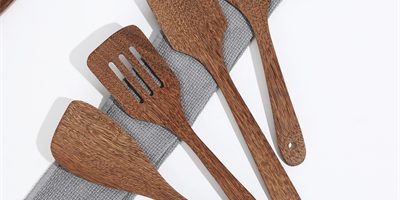Wooden utensils, with their unique charm and versatility, require a certain level of care and attention in the kitchen. In this blog, we’ll explore the art of using wooden utensils and provide tips for a seamless culinary experience.
Seasoning for Longevity
New wooden utensils benefit from seasoning before use. Applying a food-safe mineral oil or beeswax helps prevent drying and cracking, ensuring their longevity. Seasoning also enhances the rich color of the wood.
Handwashing Only
Wooden utensils are not suitable for the dishwasher. To maintain their quality and prevent warping or splintering, always handwash them with mild soap and lukewarm water. Avoid prolonged soaking.
Drying Properly
After washing, thoroughly dry wooden utensils before storing them. Towel drying or air drying on a dish rack in an upright position is recommended. Storing wet utensils can lead to mold growth and warping.
Ongoing Maintenance
Wooden utensils may require periodic re-seasoning to maintain their luster and prevent drying. Simply apply a thin layer of mineral oil or beeswax as needed. This step also helps keep the wood hydrated.
Avoiding Extreme Temperatures
Wooden utensils should not be exposed to extreme temperatures, such as direct heat from a stovetop or prolonged sun exposure. Extreme conditions can cause warping, cracking, or discoloration.
Food Safety
Wooden utensils are naturally antibacterial, but it’s essential to practice good food safety. Avoid using the same wooden utensil for raw and cooked foods, and be sure to clean them thoroughly after use.
By mastering the art of using wooden utensils and following these tips, you can enjoy a seamless and enjoyable culinary experience while preserving the beauty and functionality of your cherished kitchen tools.















